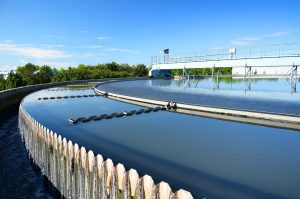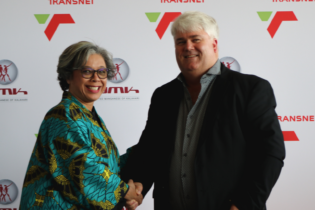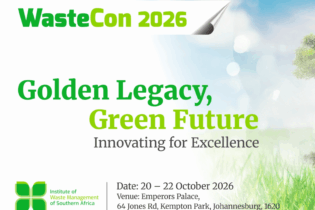Preoccupied with the ongoing national energy emergency, South Africa has failed to acknowledge the country’s next major crisis: water.
This according to water treatment expert and CEO of GAST Clearwater, Kevin Gast, who has raised concerns about the country’s rapid descent into what he calls “South African water’s eleventh hour”. Notably, the 2022 Blue Drop Progress Report released by the Department of Water and Sanitation reveals that 52% of the country’s water supply systems are in the medium to critical risk categories. Additionally, 60% have not achieved microbiological water quality compliance and 77% have not achieved chemical water quality compliance. “The alarming reality is that the majority of South Africa’s water systems lack the necessary regulatory principles, infrastructure and skills needed to deliver safe drinking water. In fact, water systems fluctuate so extensively between provinces, cities, and municipalities that I would advise many South Africans to avoid drinking tap water” says Gast. “Unfortunately, however, most households have no alternative. Rural residents, especially, rarely have the means to buy bottled water – even the few who are lucky enough to have any access to potable water. Their only hope is for the many non-compliant municipalities to resolve their current issues, which is difficult given their skills and budgetary constraints.” Weaknesses in traditional water treatment systems Explaining the weaknesses inherent in traditional water treatment systems, Gast notes that conventional water treatment systems normally work in three stages. For instance, during a primary treatment stage, a range of screens and grids of various sizes filter out large and small debris such as rubbish, stones, sand and sanitary products. Other solids such as fats, oils and grease then float to the surface where they are removed by skimmers. Next, secondary treatment breaks down organic matter by mixing in micro-organisms and converting it to carbon dioxide, water, and energy using expensive and cumbersome technologies such as bioreactors, filtration systems and aeration systems. Finally, at the tertiary treatment phase or disinfection phase, residual contaminants or specific pollutants are removed by adding or dosing the water with more obnoxious chemicals such as chlorine. This is circular logic, and witness to the desperation of the industry to deliver clean and safe water, he says. “The issue with these systems is three-fold: high input and maintenance costs; ineffectiveness against certain chemicals; and the frequent use of chemicals, which has serious negative long-term consequences for the human body and disintegrates water systems, pipes and machinery.”In response to these challenges, GAST Clearwater has therefore developed a revolutionary Advanced Low Tension Electroporation Process (ALTEP) water treatment system that is set to fundamentally change and improve water quality globally, without the use of obnoxious chemicals, biological components or membranes. This system has already been touted as the ‘Tesla’ of water treatment internationally, representing a significant leap forward in a field that has seen little advancement in decades.
“Electroporation itself is not a new concept. It has been widely utilised in the biomedical and medical science fields for quite some time, and many organisations, including NASA, have been working on methods to apply the concept to water purification. “The difficulty has always been making it work using a low energy input while keeping it commercially viable. But four years ago, GAST Clearwater cracked that code.” A low-cost, low-maintenance water treatment alternative The company’s ALTEP treatment system breaks down the outer protective cell membranes of bacteria, protozoa, and viruses, exposing their cytoplasm to manipulation by the ALTEP system. The now inert particles and carcasses are then removed, resulting in clean and safe drinking water. Unlike chlorine and conventional water treatment systems, this system is able to neutralise a large number of perfluoroalkyl and polyfluoroalkyl substances (PFAS). Better known as forever chemicals, PFAS substances include antibiotics, steroids, psychotropic drugs and certain chemicals utilised in manufacturing. It is also able to break down a host of pathogens, biomass, pesticides, and endocrine disruptors, enhancing water purity. And, through replacing secondary treatment and disinfection or tertiary treatment, the ALTEP system results in a 15% to 25% savings on Capital expenditure and operational expenditure. Finally, ALTEP is a modular automated system which can easily and inexpensively be added to existing water treatment systems or simply installed in a new facility from the onset. It is managed and controlled remotely, by expert operators, and uses some of the most highly advanced cyber security systems available to ensure infrastructure protection, says Gast. “What solar did for electricity, the GAST Clearwater ALTEP system is doing for water. This system represents a highly affordable and low maintenance option for countries around the world. The system is a next-generation water treatment solution at a fraction of the costs, without the use of chemicals, biological or membrane technology, and is considerably less expensive than conventional methods”. “Simply put, South Africa’s water treatment system is in dire straits. As the country undertakes rehabilitative action, government and municipalities need to consider alternative methods that will prove to be less expensive and healthier in the long run. And globally, the ALTEP system is a clear frontrunner in this space,” he concludes.







